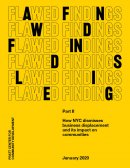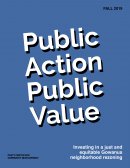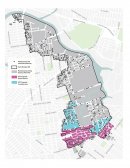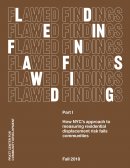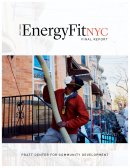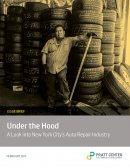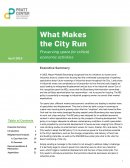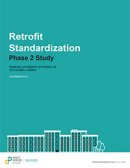
Research
We use participatory research, data analysis, and geospatial visualization to advance new solutions to low- and moderate-income communities' greatest challenges.
Refine By
Displaying 83 Research Items
Report | January 22, 2020
This report examines the business displacement analysis portion of New York City's environmental quality review process (CEQR), which is currently the only tool the City uses to assess business displacement risk. Through an in-depth review of the CEQR Technical Manual...
Report | December 10, 2019
In New York, when regulatory actions such as zoning changes increase land values, landowners or speculative investors disproportionately reap the benefits, even though a public action is what creates the value. Under the current system, property values increase, rewarding landowners, while...
Maps | December 5, 2018
The North Brooklyn IBZ remains one of the densest industrial areas of the city. While the Department of City Planning’s recent study of the area proposes to increase...
Report | September 18, 2018
Communities across the city are grappling with rising housing costs and justified fears that residents will no longer be able to afford to live in their neighborhoods. These concerns are particularly deep when displacement pressure stems from City-initiated projects, such as the rezonings...
Report | July 17, 2018
With only 1.73% of all New York State retrofits through the Home Performance program occurring in NYC, Pratt Center for Community Development strongly believes that it is time for a New York City focused, small homes energy efficiency program, specifically designed for the building stock and...
Report | March 15, 2017
The largest park in Queens and the fourth largest park in New York City, Flushing Meadows Corona Park (FMCP) spans 897 acres and is home to several important cultural institutions. Surrounded by the most diverse neighborhoods in the City, FMCP serves as an important resource for communities...
Report | February 28, 2017
Under the Hood: A Look into New York City’s Auto Repair Industry, takes an in-depth look at the oft-ignored auto sector and offers critical statistics about its most vital asset: its workforce. It reveals that auto repair jobs provide decent wages for a...
Report | April 18, 2016
What Makes the City Run: preserving space for critical economic activities analyzes strategies for preserving affordable space for industrial uses and the well-paying blue-collar jobs those sectors provide. Preserving industrial space is critical to the city’s basic ability to function – to transport, store, assemble, prepare, repair and/or remove everything a city needs, from building supplies to school busses.
Report | February 11, 2016
New York City is exploring the creation of a new type of zoning district intended to increase job density in the City’s manufacturing and industrial areas, called Enhanced Business Areas. These districts will allow for a mix of “creative-office” and manufacturing/production...
Report | December 16, 2015
Pratt Center for Community Development launched the Retrofit Standardization Study to test a simplified, scalable approach to implementing energy efficiency upgrades in New York City’s 1-4 family buildings. The first phase of the study, energy audits were conducted on 22, two-family,...
